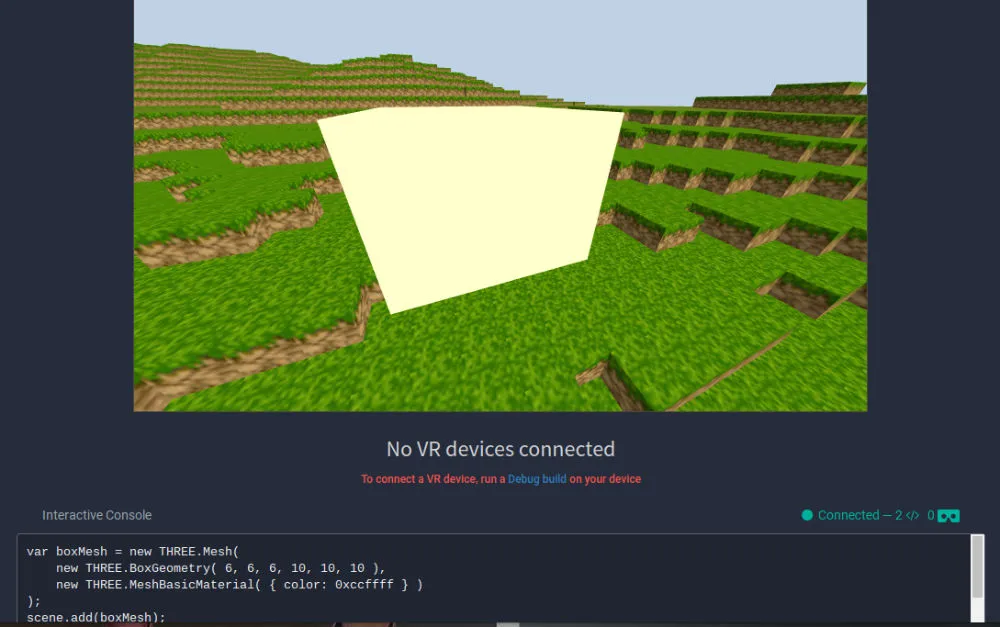The latest updates to Renderloop could let experienced Web developers, especially those familiar with the three.js Javascript library, achieve high performance with native apps on Gear VR and Cardboard.
We first reported in March on Renderloop and its founder Nicolas Lazareff, who is trying to make it easier for the thousands of Web developers out there to create high-quality VR. Lazareff wrote in an email he wants to combine the “distributed, open, connected…nature of the Web with the performance, power and capabilities of native applications.” Hundreds of beta users signed up for the service since March and feedback from those folks pointed Lazareff in the direction of supporting three.js, a popular Javascript library for 3D objects on the Web. The beta service also now provides a live preview of the virtual world as it is being made.
In a demo, Lazareff used a sample three.js project featuring a Minecraft clone and ported it directly over to the Renderloop site. We both connected to the live preview simultaneously — looking into a randomly generated Minecraft world. I watched his code expand in the browser to insert a few objects and animate them.
Using this method, it might be conceivable that a Web developer could use the Renderloop website on nothing more than a low-powered Chromebook laptop and create a basic VR experience for Cardboard or Gear VR. Assuming there was an Internet connection, an experienced web developer could theoretically make a basic VR app while on a long plane flight — previewing it in a browser along the way and deploying builds to the Gear VR for testing.
Renderloop is far from the only technology being built to serve the needs of Web developers, who are faced with the prospect of learning new tools in order to create compelling VR experiences. For example, there’s also A-Frame, backed by Mozilla, which also uses three.js for similar high-quality VR purposes. Where Renderloop differs the most is that it’s built to help developers manage a whole project through a Web-based interface.
“Everyone in VR is trying to figure out what works, and it’s really fun to be able to test things out quickly and collaboratively,” Lazareff wrote.





























